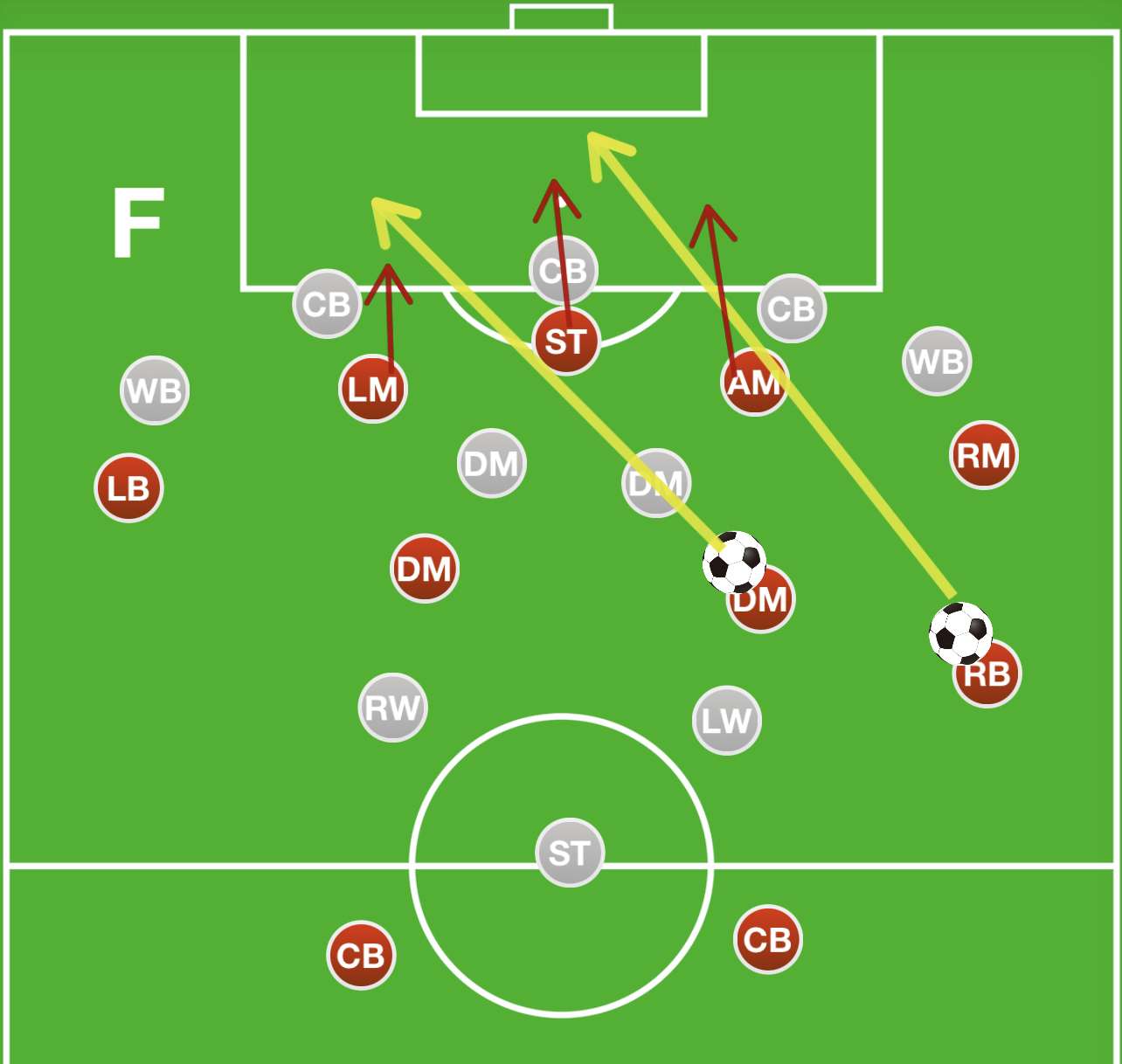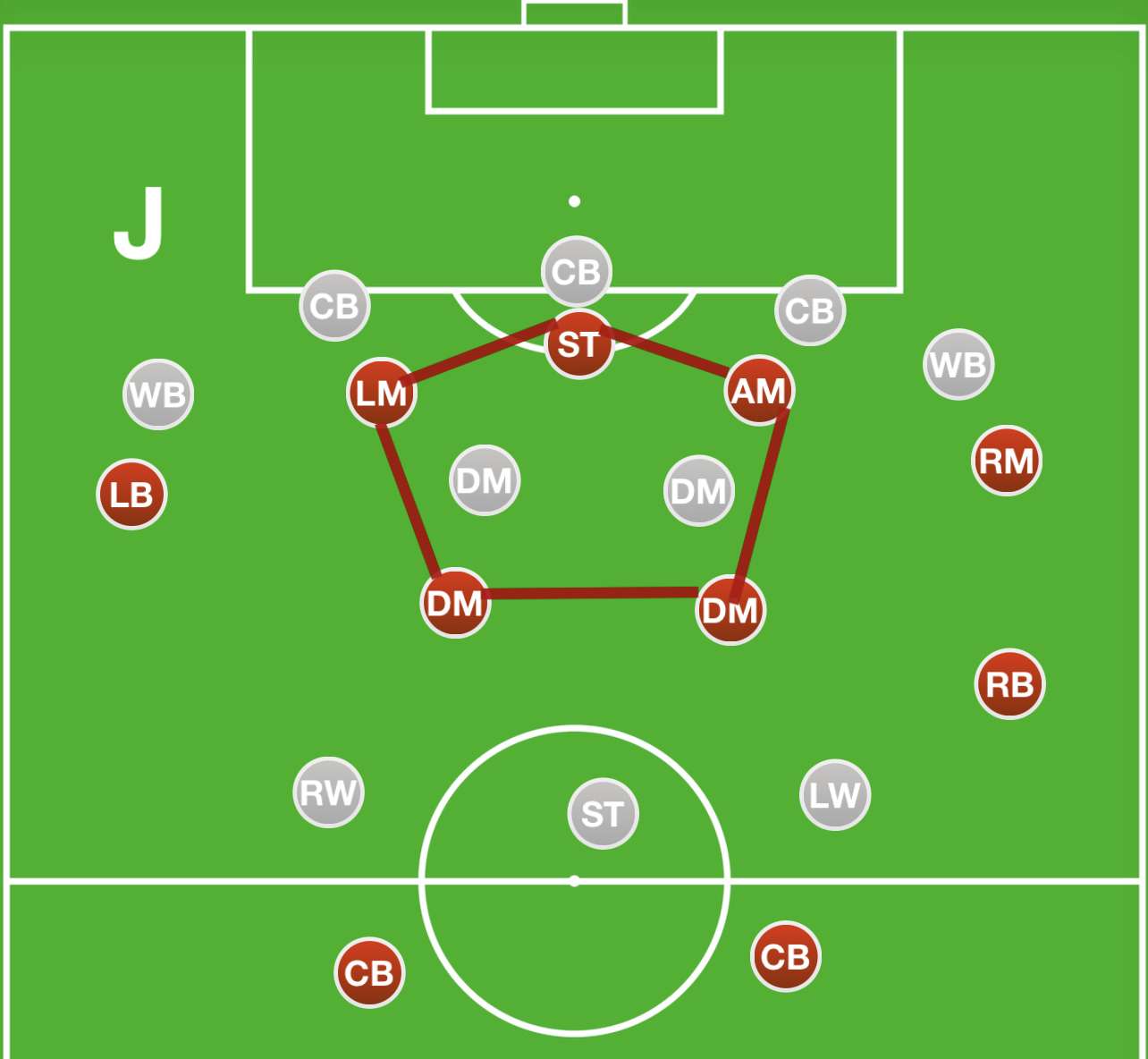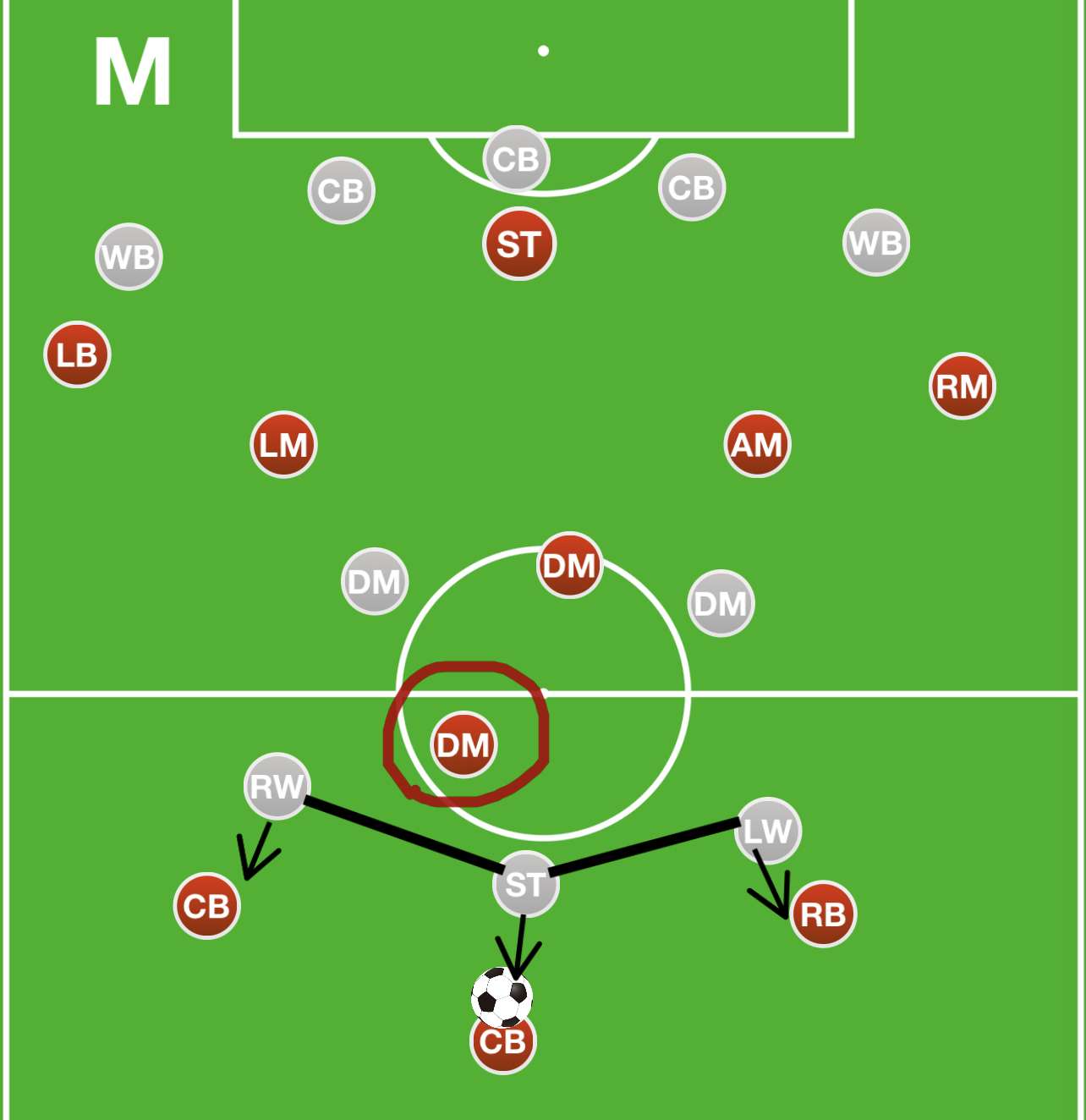Bayern Munich extended their lead at the top of the Bundesliga with a 1-1 draw against Bayer Leverkusen on Saturday. Niklas Süle opened the scoring before Thomas Müller’s own goal secured a point for Gerardo Seoane’s B04. But how did the game play out tactically?
Bayern Munich’s relentless attack in the first half
In the first half, Leverkusen set up with a 5-2-3 defensive shape as such. Here, Bayern responded by implementing a makeshift 3-1-3-3 in attack (A) which allowed them numerical superiority over Leverkusen’s first and second line of defense (B). This numerical superiority facilitated seamless ball progression into Leverkusen’s half (C), upon which Bayern dedicated an abundance of numbers forward.



Doing so allowed Bayern to overload centrally while simultaneously keeping their attack’s width as such (D). This facilitated quick one touch football in and around Leverkusen’s box (E) resulting in multiple goal-scoring chances. As Bayern continued to crowd in and around the opposition’s box, deep players such as Kimmich (DM) and Pavard (RB) also supported from midfield areas. Here, they often launched diagonal crosses into box (F), asking multiple questions of the away team.



Speaking of asking multiple questions, Bayern’s attacks did not only begin via quick short passes. They were also able to progress play via lethal long balls toward Leverkusen’s final third. Here, Bayern were able to initiate aggressive counter-presses in order to win second-balls near Leverkusen’s final third, adding another dimension to their attack (G).

With that, Bayern’s relentlessness did not stop here. As Leverkusen attempted to build from the back, Bayern set up a 3-1-3-3 press as such. This combated Leverkusen’s 4-3-3 shape in build-up, which intended to progress play via wide areas (H). Here, Bayern completely outnumbered Leverkusen in wide areas, winning the ball in advantageous areas and initiating more attacks as a result (I). That begs the question, if Leverkusen’s build up were so futile, how did they manage to threaten Bayern so many times in the first half?


How Leverkusen managed to have the better chances in the first half
In the first half, Leverkusen remained adamant on defending in a 5-2-3 shape, despite Bayern having a field day capitalizing on their double 6s (J). Why? Because it allowed Leverkusen to implement a narrow 5-2-2-1 shape as follows (K), facilitating quick, lethal counter attacks when Bayern dedicated 7-8 players forward.


As the half went on, Leverkusen also pressed more aggressively with their front 3. Why? Remember, early in the first half, Bayern was allowed a 4v3 advantage over Leverkusen’s first line of press. This was as Leverkusen’s front 3 sat back, allowing space for Kimmich to drop near Bayern’s defenders (L). This changed later in the second half, as Leverkusen’s front 3 pressed higher, removing Kimmich from the equation, retaining a 3v3 match up instead (M). This match up/aggressive press forced mistakes from Bayern’s CBs, giving away possession in dangerous positions and allowing Leverkusen multiple goal-scoring opportunities.


Second half changes that saw both teams see out a draw
In the second half, Bayern realized the threat Leverkusen’s press presented when trying to build centrally. For this reason, Bayern began progressing play using a wide overload instead (N). Here, once the ball was progressed to advanced wide-areas, Bayern retained their central overload, adopting similar attacking methods as in the first half.


In response, Leverkusen switched their 5-3-2 set up to a 4-3-3 wide press in order to nullify Bayern’s wide overload as such (O). Here, Bayern had to find alternate ways of progressing attacks (e.g. through quick switches), in order to continue threatening Leverkusen. In the end, both teams kept going at it until the match ended in an eventual draw. A result on paper which did not do justice to how exciting and entertaining this match was on the eyes.
By Ryan Gunness.










